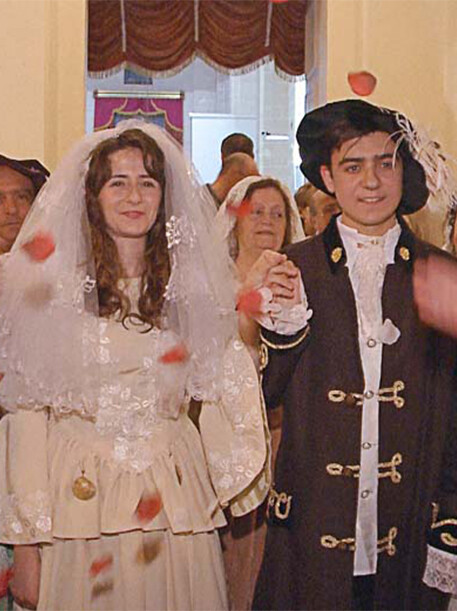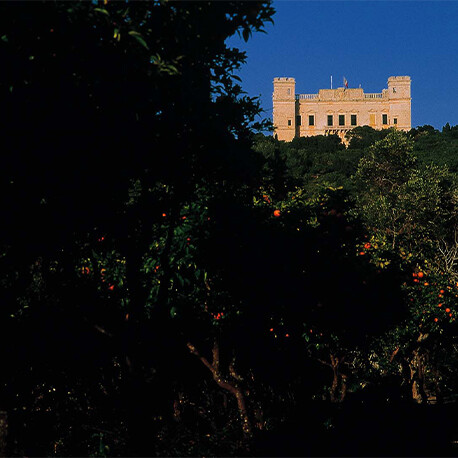Celebrate L-Imnarja like a local: one of Malta & Gozo’s oldest feasts
and dive deeper
A celebration of harvest, light and patron saints.
L-Imnarja is one of the many public holidays that is observed by locals, and a perfect excuse to go all out. While farmers celebrate the new harvest, it is a feast of light for the Church, celebrating St Peter and St Paul, but has pagan connotations, too. It tends to get a bit confusing, but we’ll break it down for you.
While today locals eagerly await 29th June to head to the beach or participate in local traditions, celebrations have evolved ever since their initial commencement during the Roman period.
Celebrations that date back centuries
Having roots that span centuries, L-Imnarja is one of the oldest feasts celebrated on the Maltese Islands. Dating back to the Roman period, L-Imnarja is derived from the Latin word luminaria, a pagan feast that celebrated light. On the eve of the local feast, fiaccoli and fires on the bastion walls of the Silent City of Mdina would burn. The pagan tradition trickled into Christianity which celebrates St Peter and St Paul, saints who are considered to be the light of the church.
And like most local celebrations, there’s an element of fun and as locals say, briju to the feast. Various traditions with cultural and heritage ties are also celebrated on 29th June. Farmers gather at Buskett Gardens to rest and enjoy the celebrations following a good harvest. And rightly so! But, as everything has done over time, celebrations have transformed, yet still in keeping with core values.
 Traditional Maltese Wedding.
Traditional Maltese Wedding. Re-enactment of the period when the knights were in Malta.
Re-enactment of the period when the knights were in Malta.Popularity during the knights’ period
During the Knights’ period, various elements of local culture were shaken up or introduced, including elements of the Imnarja feast.
The Knights were known to cause a bit of ruckus (even though they were a somewhat religious order); they still liked to have a good time. In the Archives of the Order of the Knights of St John, it was found that Grand Master Pinto increased the Solemnity of Imnarja by participating in the events as the prince of the island. However, following the liturgical feasts which would take place in the magnificent Mdina Cathedral, including a procession led by the Archbishop and Monsigneurs of the Cathedral, the Knights and locals alike would take to the streets for a grand celebration. The main attraction of L-Imnarja, and one that was introduced by the Knights, was the race – a street race that departed from the Judge’s porch which saw men and children battle for silk prizes. Let’s just say, you wouldn’t want to be in their way!
Marriage and Mnarja
Another Mnarja tradition is related to marriage, although it’s one that has since died out. It was such an important feast that even the law got involved. Here us out: notaries would write up marriage contracts and the soon-to-be-groom would pay the bride’s father the agreed sum of dowry money. This not only was a promise of marriage, but it also bound the groom to take his future wife out to the three occasions for newlywed entertainment: the feasts of St Gregory, St John, and of course, L-Imnarja. It was also tradition to take the bride to the feast within the first year of marriage. New wives would even turn up in their wedding dresses and veils for the sake of good luck!
 Maltese traditional folklore band.
Maltese traditional folklore band.Modern-day celebrations
Being a public holiday in modern-day times, 29th June is a date marked in everyone’s calendars for many reasons. It usually marks the end of the scholastic year for school children and the start of their three-month long summer vacation. For workers, it means a well-needed rest day to do things they love or simply to get their tan on – no matter the day it falls on that year.
Tradition is still at the forefront of this feast, though! Like every celebration, feast fanatics go all out to make sure that it’s a well-attended event. However, unlike other summer feasts that focus on alcohol, competitive band musical performances and cheap food, L-Imnarja is one of the feasts that keeps culture and folklore at its core.
L-Imnarja is celebrated at Buskett Gardens on the outskirts of the quaint village of Rabat and in Nadur in Gozo (Malta’s sister isle which is just a 20-minute ferry ride away). The appropriate pomp and circumstance are given to the religious portion of the feast, including mass celebrations, processions in the village core, followed by a display of fireworks.
If you’re in Malta during this time of year, we definitely recommend visiting Rabat to experience the feast like a local. At the heart of village is where you can expect local folk music called għana to serenade you while you roam around to chat with locals, their families, and their animals – it’s an agricultural feast, after all! In fact, in 1844, the ‘Societa Agraria Economico-di Malta’ was set up and began running the Maltese Industry. Every year during the feast, locals would meet in Rabat to show off their produce, which included farming, animals, fruits, vegetables, honey and cheese. And lucky for you, it’s part of the feast that still exists today. Nowadays, farmers bring along donkeys, horses and other farm animals and pets to enjoy their day off, too!
Last but definitely not least, that infamous race still happens today! However, horses and donkeys are the ones racing rather than men and children. During the late afternoon hours, everyone takes to the streets to watch this traditional race that happens on Saqajja Hill, just outside of Mdina and before the entrance to Rabat. Contenders vie for the Palju – a traditional banner of sorts presented as a trophy to the winners of various categories. Back during the Knights’ period, the Palju was presented to the winners by none other than the Grand Master – talk about an honour!
 Buskett, Malta. Photo Credits go to Visit Malta.
Buskett, Malta. Photo Credits go to Visit Malta.

